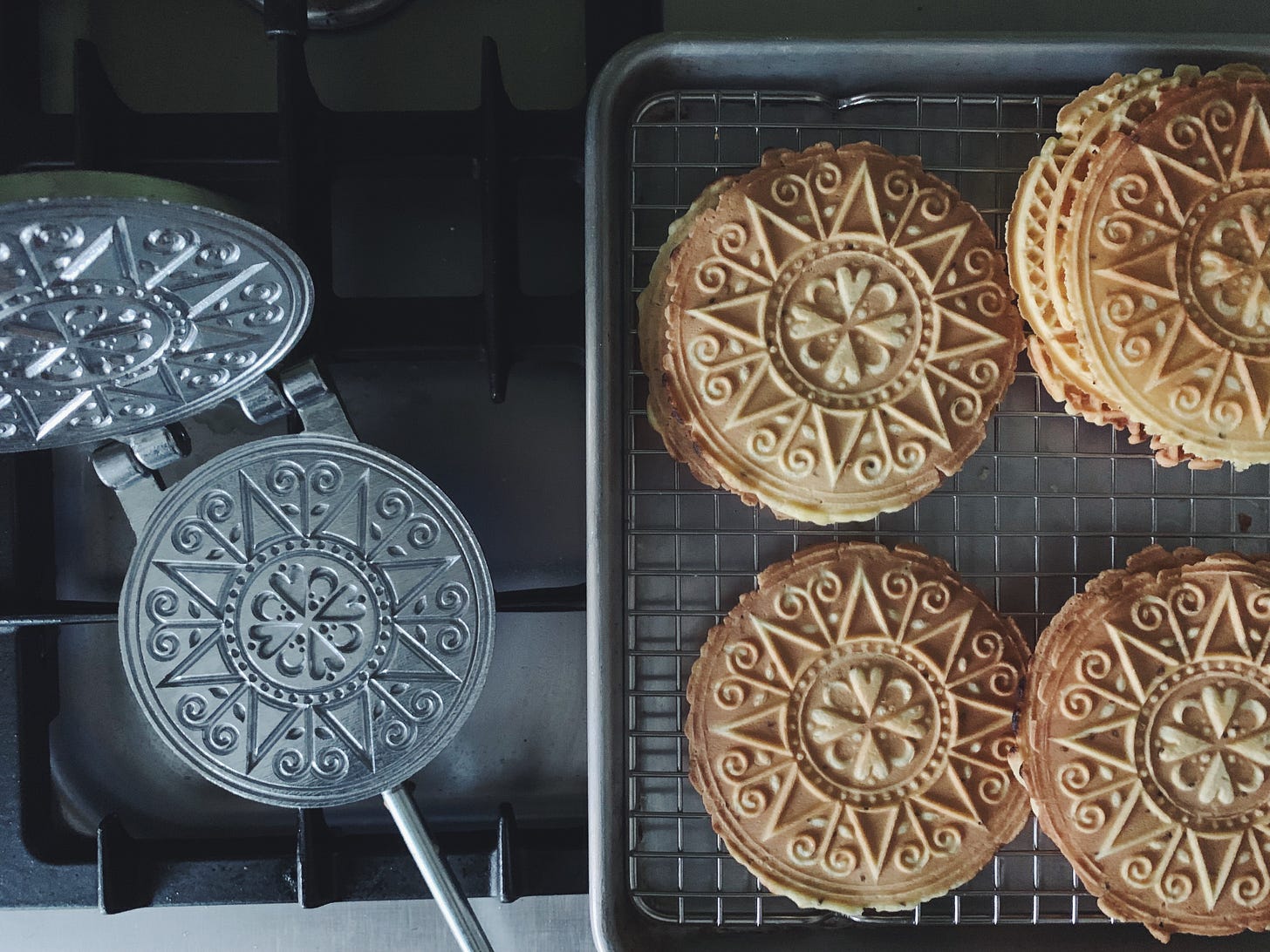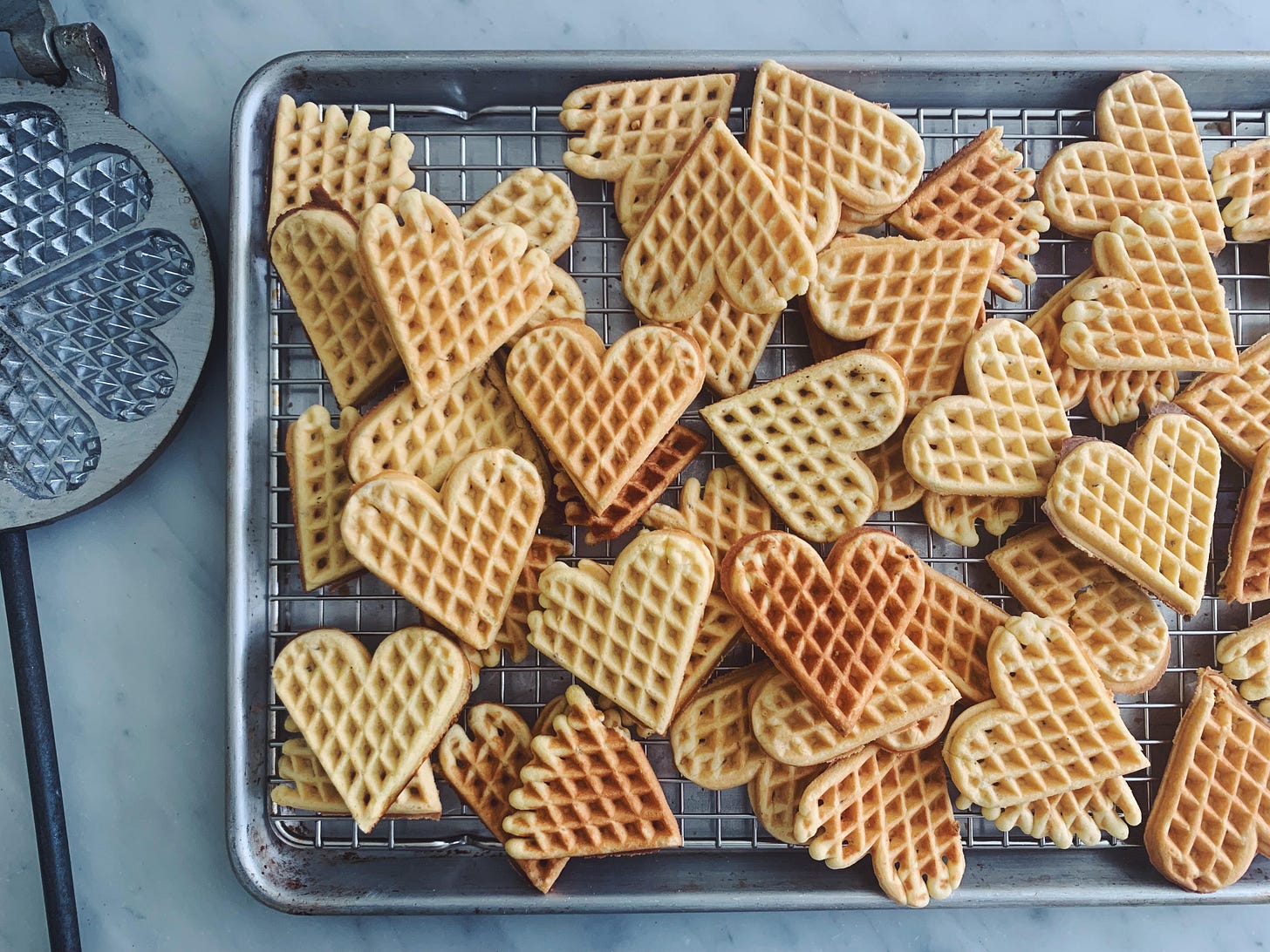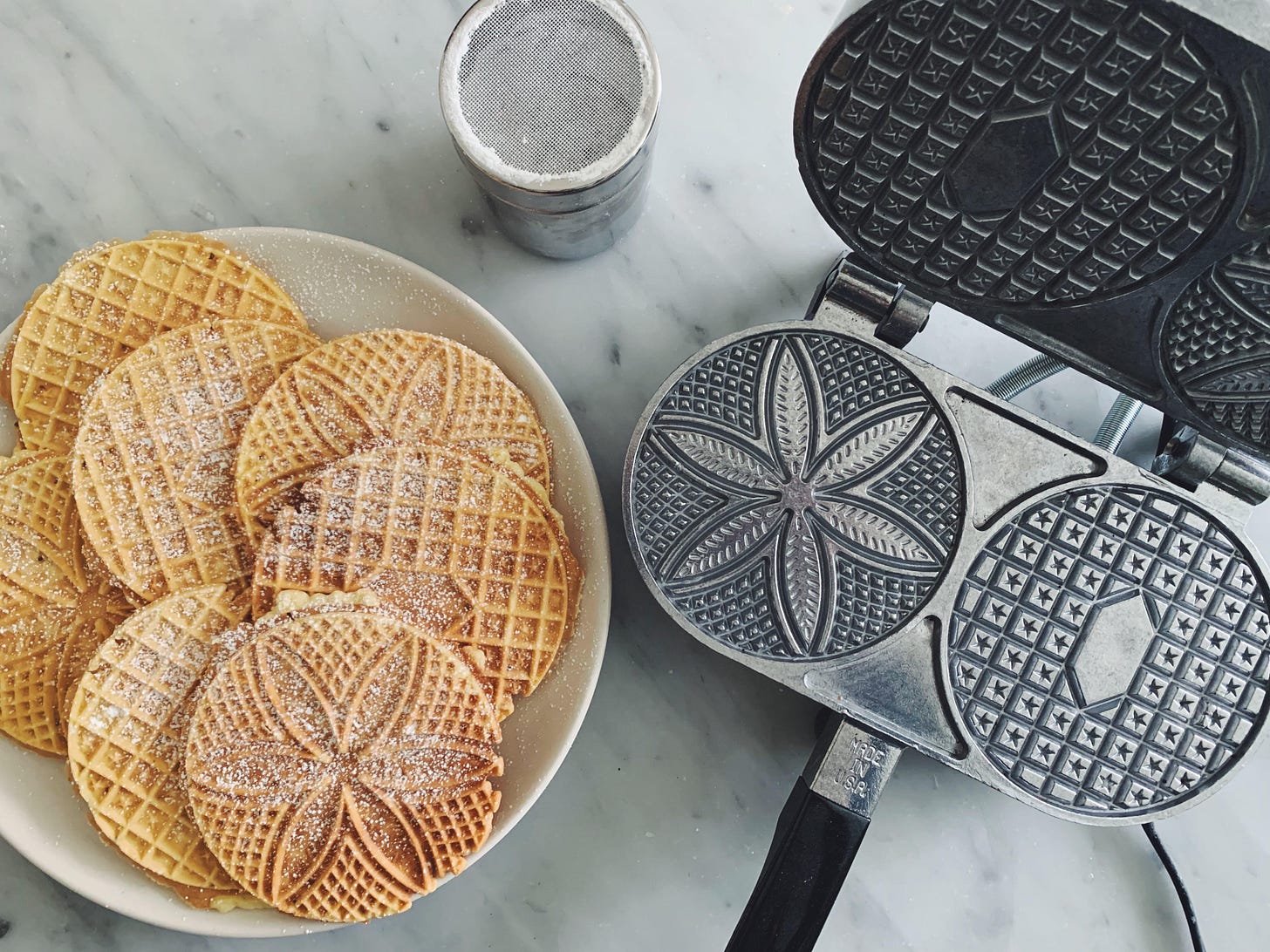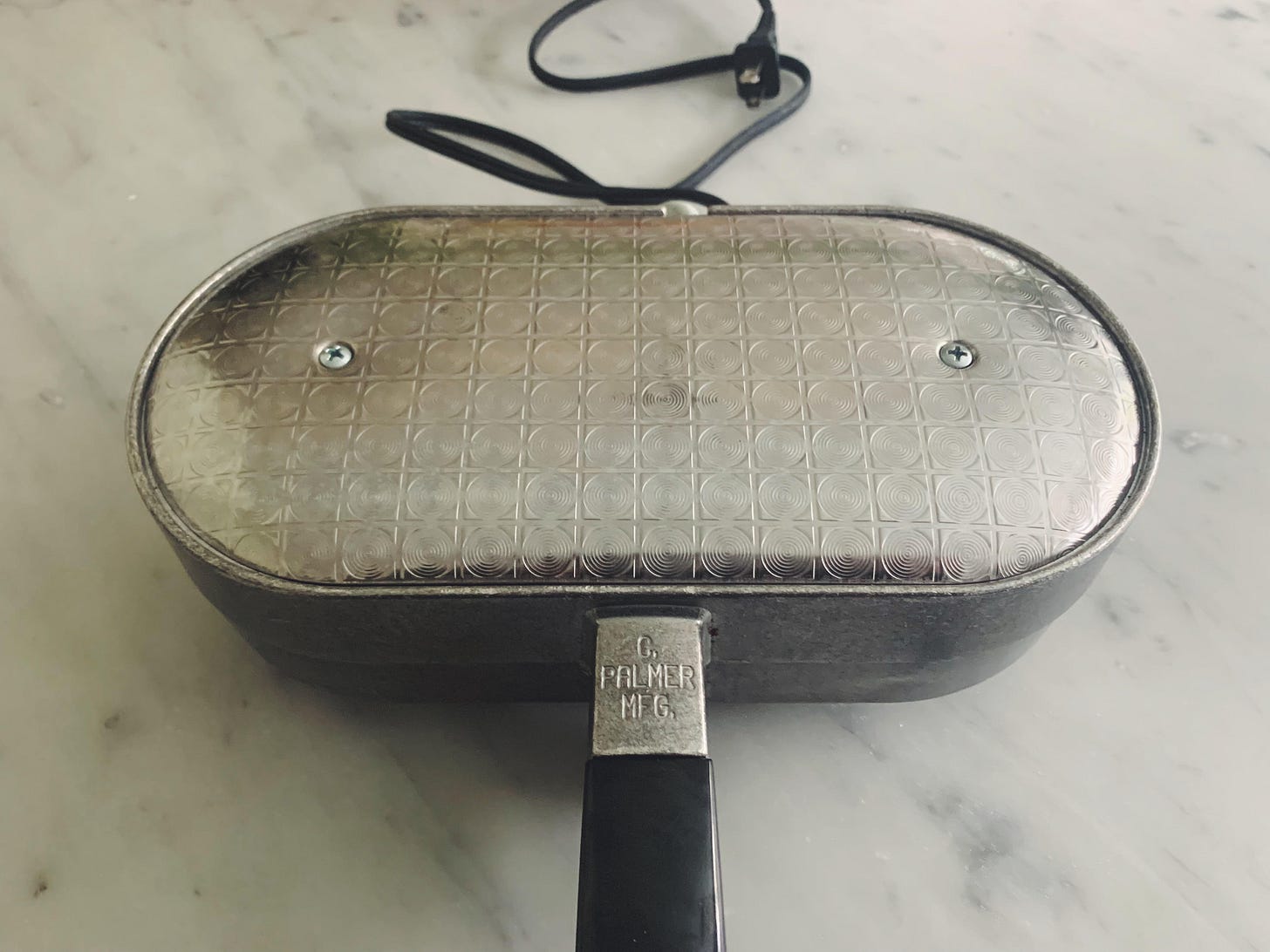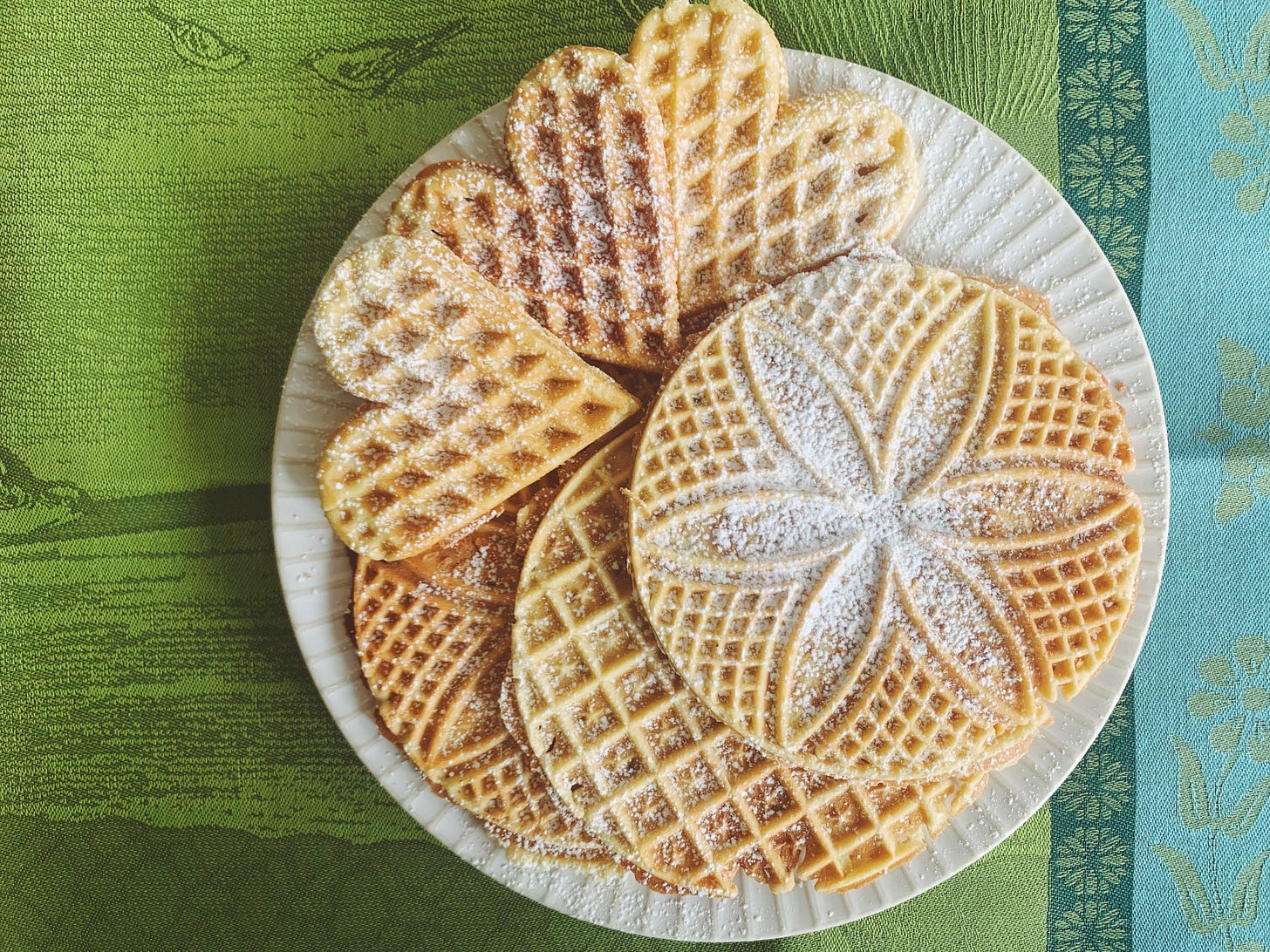Occasional Cookie #3: Pizzelle
An Appreciation and a Recipe for a Traditional Cookie from Abruzzo
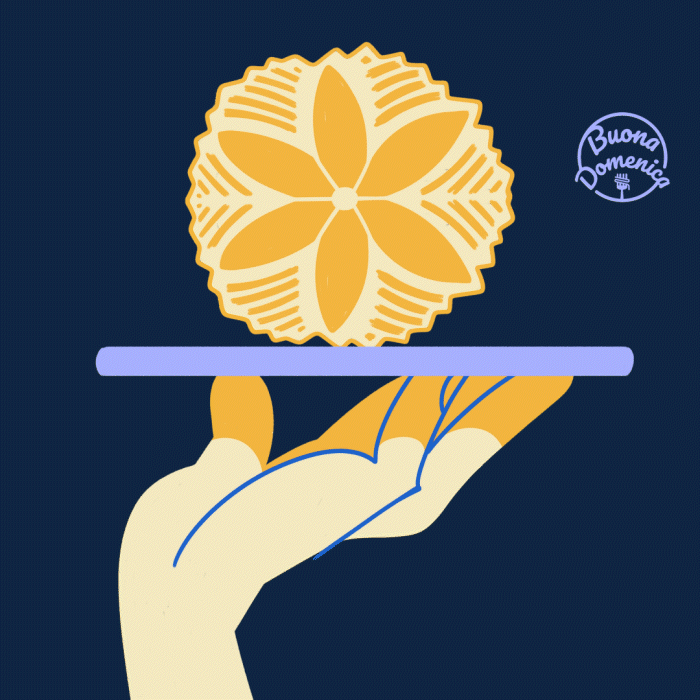
Welcome to Buona Domenica, a weekly newsletter of Italian home cooking and baking. I’m a journalist, cooking teacher, occasional tour guide, and author of eight cookbooks on Italian cuisine.
Welcome, also, to the third installment of Occasional Cookie, a series in which I post a recipe for a favorite Italian cookie. The text of this week’s newsletter is free to all subscribers, while the recipe for pizzelle, along with a troubleshooting guide, is accessible to paid subscribers.
Click here to browse through the newsletter archive. If you’re looking for a particular recipe, you’ll find all Buona Domenica recipes—153 and counting—indexed here, ready to download and print—a function for paid subscribers.
If you are able to do so, please consider supporting my work by becoming a paid subscriber.
On to the newsletter…
For the longest time, the allure of pizzelle eluded me. If they were part of a cookie plate, there was always another cookie that I went for first: my mother’s buttery hazelnut crescents, or the sesame-coated red wine cookies that she started making in the late 1970s, or my sister’s rich, chocolate rugelach, or—my own specialty back then—crumbly, dense peanut butter cookies that I rolled into balls, then squashed down with a fork to make criss-crossed tops.
Not that I did not like pizzelle, those crispy, snowflake-patterned cookies made in an appliance similar to a waffle iron. My mother, who loved them—she was from Abruzzo, after all, where the cookie’s history goes back centuries—made them a few times a year. Hers were crispy and not too sweet, perfumed with vanilla and aniseed, or sometimes enriched with finely chopped almonds or walnuts. I remember one long-ago morning, munching on one for breakfast and being surprised, as I was every time I bit into a pizzella*, at how tasty it actually was, delicate yet satisfying, especially spread with softened butter and jam. Still, I never craved them the way I did those peanut butter cookies, and I don’t remember ever asking my mom to make them.
* ‘Pizzella’ is singular, ‘pizzelle’ is plural, so there is no need for an ‘s’ at the end.
One day, a few years ago, I started to see pizzelle differently. They ceased, suddenly, to be the ho-hum Italian-American cookie that came after all the other cookies in my personal cookie hierarchy. I became interested in the irons sold at hardware and kitchenware stores in Abruzzo, not only electric ones but also manual ones with long handles, originally meant for the hearth but suitable for the stovetop. You see them displayed in shop entryways and in windows, their lids open to reveal gleaming stamped patterns.
I began to pay attention to the different, intricate designs—a rose window, a quartet of hearts, a rectangular diamond pattern, a presentosa (a traditional symbol of love in Abruzzo). The quality of the cast aluminum irons was far above the soulless, nonstick iron I kept stored away in a closet and rarely used. I also noticed that nearly all the irons were made by one manufacturer: CBE Elettrodomestici, located in Spoltore, which happens to be a mere half-hour’s drive from my house in Penne. When I contacted the company, they kindly invited me to visit.
Owner Marco Lauterio told me his father started CBE in the 1970s, after seeing the number of pizzelle iron manufacturers in the region dwindle. Although the irons were once made from cast iron, CBE now makes them from cast aluminum, which is less expensive to make, lighter and easier to use, and cools down more quickly.
A pizzelle iron is not just an appliance for Abruzzese families—it was traditionally part of a young woman’s dowry; each family had an iron with its own design, sometimes monogrammed. There would always be a plate of pizzelle on the table, along with coffee, to welcome guests. “It is a very convivial cookie,” Claudia, one of the designers and recipe developers at CBE, told me. “The patterns are made so the cookies can be divided and shared.”
The term “pizzelle” is just one name for this regional cookie. In fact, in Abruzzo it is more commonly known as “ferratelle,” from the word “ferro,” meaning iron. Depending on where you are in the region, they are also called cansestrelli, neole, and nevole, and there are slight differences among them. For example, nevole, which come from Ortona, are shaped into cones while still warm and pliable, and the batter contains mosto cotto—cooked grape must, giving the cookie a duskier tone.
CBE makes both electric and manual irons, in traditional and new patterns. They encourage innovation, Marco Lauterio said, with both sweet and savory recipes. You’ll find a few of them here.
My mom used an old electric iron for her pizzelle (I wish I had saved it) but she also had a manual one with a heart motif, which I did keep. It had hung on the wall in her kitchen along with copper molds and her chitarra. Some weeks after my visit to CBE, when I was back in the U.S., I pulled out my mom’s iron and made my first batch of manual pizzelle. I was expecting disaster, but it turned out to be a pretty simple process. Standard pizzelle batter works well; it’s just a matter of properly heating and seasoning the iron on the stovetop before dolloping on the batter.
But I still wanted the convenience of an electric iron, so I searched online, hoping to find a high-quality Italian-made one that would work with my American electric outlet. Instead, my search led me to C Palmer Mfg. Co. The company, based in West Newton, PA, has been making pizzelle irons in the U.S. since it was founded by Carmen Palmieri in 1943.
It won’t surprise you to learn that Mr. Palmieri was from Abruzzo. He came to the U.S. as a teenager and worked as a coal miner and a machinist before starting his company. Mr. Palmieri crafted his first pizzelle iron in his basement and eventually began selling his product to Italian grocers in Pittsburgh’s Strip District. His son, John, followed him into the business and came up with the design for an electric iron, which is still sold today.
The company, now managed by Carmen Palmieri’s grandchildren, sells four models of pizzelle irons, as well as a range of other cookie irons and molds, all made in Maryland and Pennsylvania. (It also manufacturers a variety of other non-cookie-related aluminum products.) I bought an “original” model. I am not exaggerating when I say that I fell in love with it the second I pulled it out of the box. It is made from heavy cast aluminum, and the lid has a beautiful quilted pattern. The double-sided plates feature a detailed flower pattern on one side and a grid of stars on the other with a place in the center for a monogram (stupidly, I chose not to monogram mine when I bought it).
“We’ve never changed,” granddaughter Darcy told me recently over the phone. “We did come out with a 75th anniversary iron that makes a thinner pizzelle using a pretty design my dad [John] had made that we found in the foundry. People recognize our pizzelle patterns. If it works, if it’s good, why change?”
I asked Darcy if she had a favorite pizzelle recipe, and she replied that it was a family recipe that her sister Cristy had refined over the years. You can find it here.
RECIPE: Pizzelle
I’m lucky to have many of my mom’s recipes, but her pizzelle recipe is not one of them. So over the last few of years I’ve worked on my own classic version. It’s not that different from the recipes printed in instruction pamphlets that come packaged with pizzelle irons, but I’ve made tweaks here and there, adjusting the flavors and the consistency of the batter— I like them extra light and crispy.
I’m also including a troubleshooting guide. Pizzelle are not difficult to make, but they can be fiddly, not to mention messy. If you’re new to making them, read the guide before plunging in. Even if you are a veteran pizzelle maker, you may still find the tips helpful. And please do share any tips of your own in the comments.
Keep reading with a 7-day free trial
Subscribe to Buona Domenica to keep reading this post and get 7 days of free access to the full post archives.




